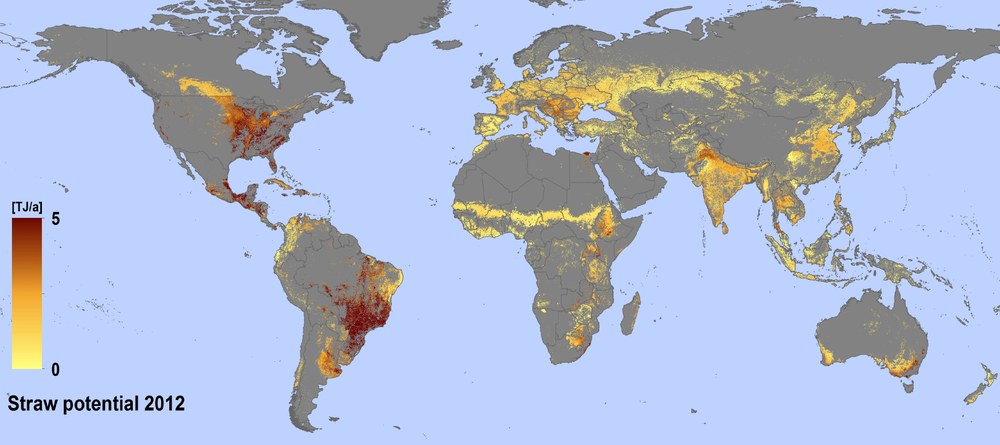Heat with Straw for 13 Years – First Estimate of Global Bioenergy Potential for Straw
DFD scientists have determined for the first time the global bioenergy potential of straw, which could meet Germany’s heating needs for 13 years. The availability of biomass, particularly in the form of so-far unused waste straw from agricultural acreage, is a central indicator for calculating the net energy yield of renewable energy resources.

The data set on global straw potential generated by DLR now makes available a unique information source giving a detailed indication of the local distribution and availability of energy from straw biomass. The calculation of this important component of bioenergy potential, covering one year, is supported by satellite data and uses the BETHY/DLR vegetation model. It is based on values of net primary production (NPP) modeled daily and combined with land-use information to yield the energy potential (TJ/a) over a 1 km grid.
As an example, a global straw potential of some 55 million TJ was calculated for 2012. Theoretically, this amount could meet all of Germany’s primary energy requirements for four years. Together with other DLR research teams, the derivation of biomass energy potentials will continue to be furthered as a key contribution to the effort to achieve a sustainable energy supply, as well as to environmental and climate research.
